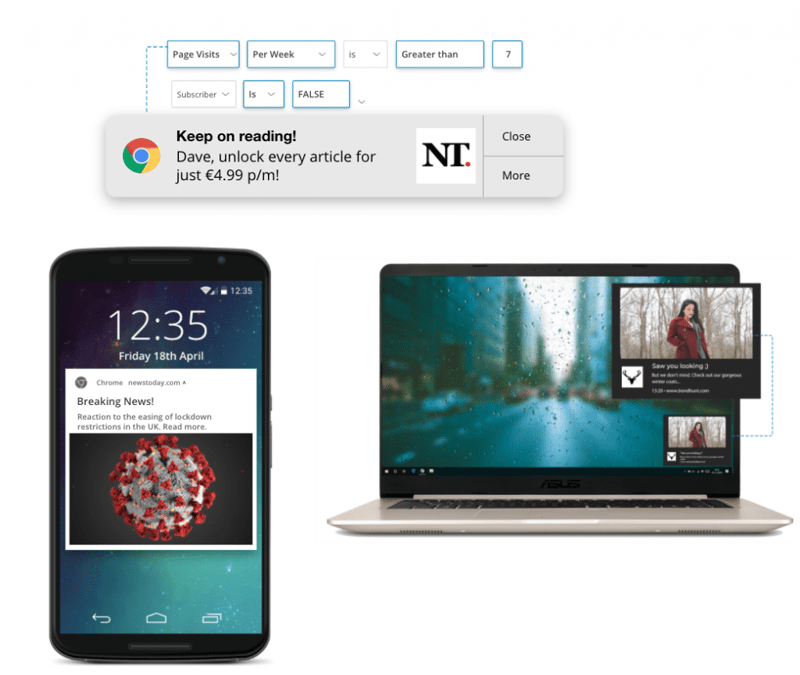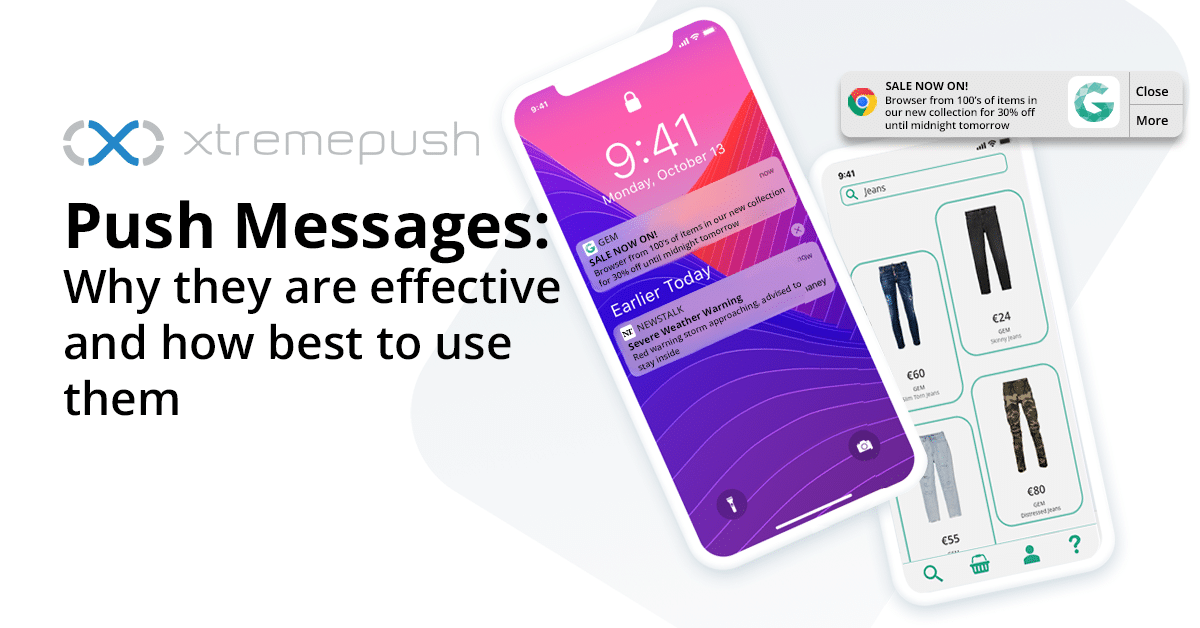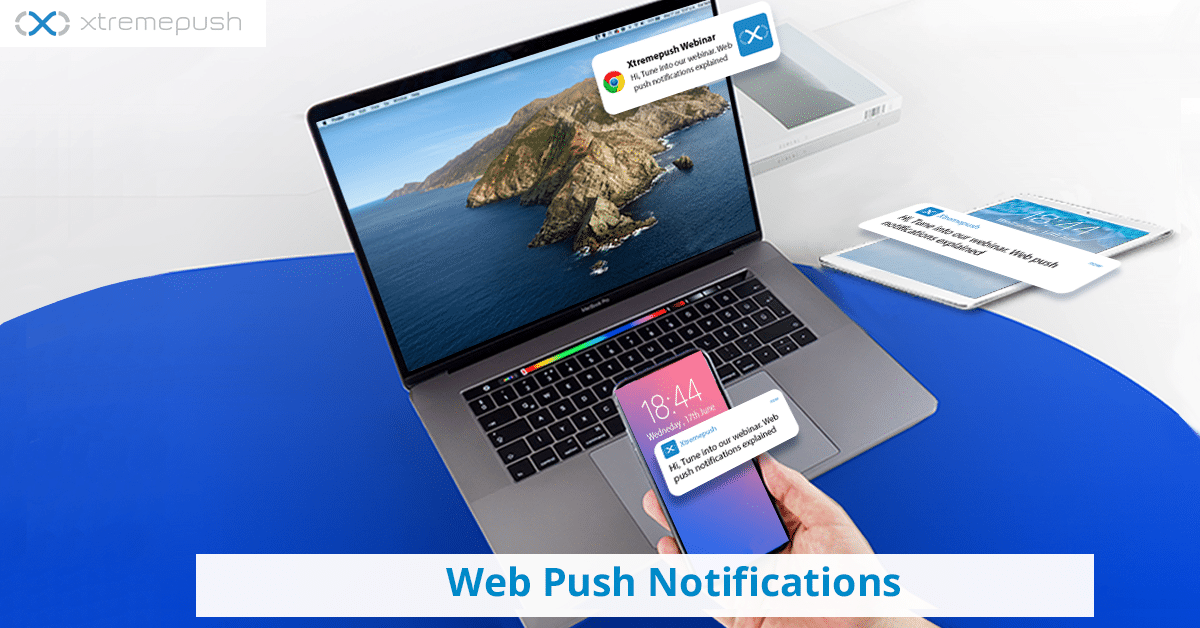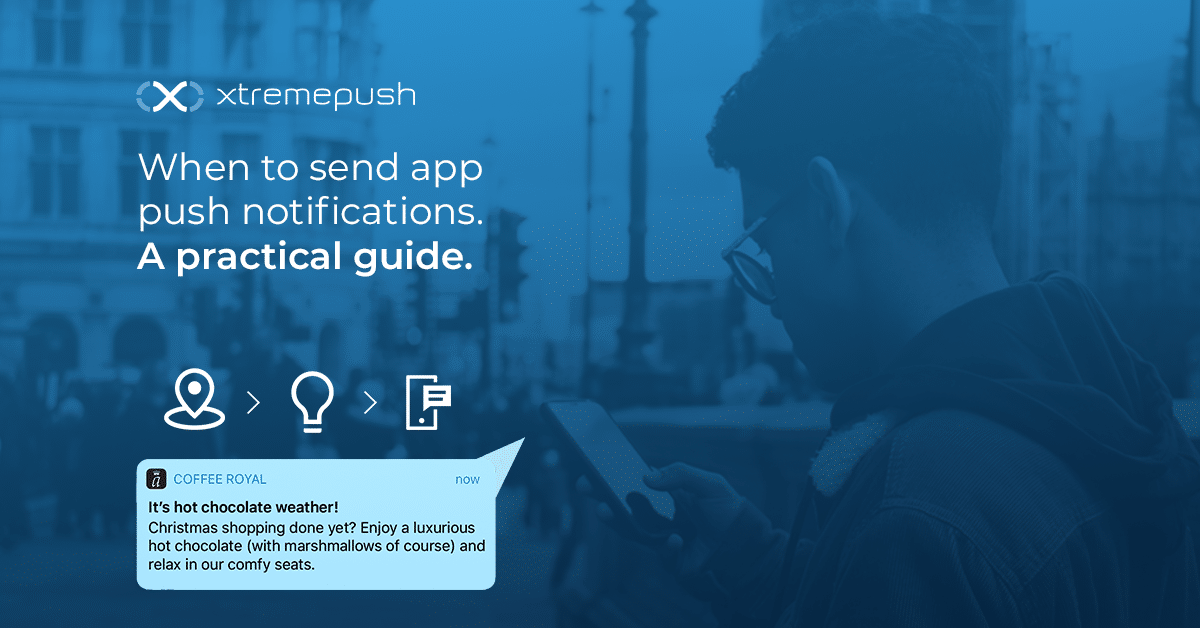What are Web Push Notifications?
Web Push Notifications are certainly not a new marketing and engagement channel, but there is still a huge amount of uncertainty about what is, the value it offers and how it actually works.
We recently hosted an in-depth webinar on this very subject, which you can watch on-demand. It lasts for approximately one hour and will give you a comprehensive understanding of the key points, from the very basics to more advanced strategies like personalisation, real-time triggering and combining web push notifications with email to create a multichannel campaign.
But alternatively, you can just keep reading to learn everything there is to know about this versatile and impactful channel, with plenty of real-life use cases and customer journeys for inspiration!
FYI: If you want to learn more about getting more opt-ins for web push campaigns then we recommend you check our detailed best practices guide.
Web Push Notifications 101: The Basics
The overarching purpose of a web push (or a browser push as it’s sometimes known) is to drive traffic to your traffic. It’s a dynamic, highly visible customer engagement channel.
As we’ll see later in the use cases, this basic concept has numerous practical applications depending on your specific goal and which web page you want to direct the customer to. Take a look at the image below to get a quick sense of the variety of the channel. And as you can see, web pushes can be delivered to both desktop and android mobile devices (iOS devices do not currently support it, however).

This is because, as the name suggests, web browser push notifications are delivered via the user’s browser operating system, whether that’s Chrome, Firefox or Safari. Crucially, and this is why it’s so useful, the user does not need to be on the website to receive a push notification from it.
As you can from the same image, each browser has its own set of creative restrictions, with some supporting images and others not, for example. Below are 5 Reasons why Web Push Notifications are so effective

How do I set up and send Web Push Notifications?
Web push is not a difficult channel to implement. It’s a relatively simple process, requiring minimal development work. One important point to mention; this is a permission-based channel, which requires the user to actively opt-in to receive them.

Deployment: Provider’s SDK is deployed to your website. This is a simple piece of code that allows the website and web push service provider to communicate.
Opt-In: Visitors to your website are served an “opt-in request”. When they click “Allow” they are added to your subscriber list.
Engagement: You can start sending push notifications to subscribers immediately, in real time (triggered by any number of events) or as part of a scheduled campaign.
Include CTAs: Push notifications can include 1 or 2 CTAs, deeplinked to specific URLs.
Web Traffic: When a user clicks on the CTA they are directed to the URL associated with it.
Web Push Notifications Use Cases and Examples
The fact that you can deeplink to specific pages of a website really opens up the scope of use cases for the channel but typically we divide them into 4 categories that are common across all verticals; sales funnel drop-offs, driving web traffic, real-time engagement, retention (churn prevent and loyalty programmes).
Sales / funnel drop-off recovery
For retailers, this use case is very clear. We want to intervene when a potential customer adds items to their basket but does not complete a purchase. We can apply this same idea to other verticals just as easily. For example, we have sports betting and gaming brands who use web push to take players back to abandoned betting slips, while banking clients use it successfully to re-ignite incomplete loan applications. In the travel and tourism industry, it’s used to recover abandoned bookings and so on.
Take a look at the video to get a sense of how this happens on a practical level.
In terms of how a campaign like this is set up, it’s based on an event being triggered, smart segmentation and a time delay. So a product is added to a basket (that’s the event), but the web push is only sent to those customers who haven’t actually gone on to purchase (that’s the segment) and finally, the web push is scheduled to be sent within a few seconds (that’s the purpose of demonstration, you have full control over when it’s actually sent whether that’s 30 minutes, 24 hours or more).
During our webinar, we asked participants which channels they were currently using for cart/sale recovery campaigns. Unsurprisingly, 75% of respondents said they were using email for this purpose. It was interesting to see, however, that no-one was currently using web push. That shows just how underutilised the channel is, despite the results it delivers, as you can see below.

Driving website traffic
This is a really important one for publishers (or brands in other verticals who don’t want to send a hard sales campaign, just encourage customers on-site).
What’s key here is the level of personalization that you inject into the campaign. Using a mix of event-tags an individual has hit (via our integration with Google Tag Manager) and known attributes (where a customer has told you what they are interested in), it’s possible to create recurring daily and weekly campaigns (as you might with email) that relate to each recipient’s preferences.

In the example above, we know that the user is interested in receiving sports content (this is an attribute associated with their profile as they self-selected this category), but based on their recent activity (the tagged pages or articles they’ve visited in the past week) we also know they are interested in tennis and Liverpool.
The result is a dynamic campaign that reflects the customer’s interests. And as it’s built around dynamic content, this single campaign will appear differently to each recipient. That’s one to one marketing at scale.
Real-time, event-triggered web push notifications
There are moments when you might want to send a push message immediately once a customer has taken a specific action on-site or as soon as they’ve entered a particular segment (at risk of churn) or reached a loyalty milestone.
In the sports betting industry, where in-play betting is so crucial, the ability to get a web push out to a customer in real time is vital. That’s the best way to promote half-time odds and so on.
In the video example below, the push is being sent at half-time in a big soccer match to users who typically place half-time bets or already have a bet placed on this match.
By the same token, publishing and media brands need the ability to reach customers with breaking news before any of their competitors. For many, web push has become a vital means of driving readers on-site for time-sensitive content, far exceeding email in this regard
How do web push notifications compare with email?
We’ve held them up beside each other once or twice so far, so let’s dig a little deeper into the comparison between email and web push.
We are big fans of both channels, that should be said, and in some ways, it’s not fair to pit them against one another. Email continues to be the primary means of outbound communications for many brands and that’s unlikely to change.
However, web push, from what the statistics show us, has some real advantages. Firstly, it’s immediacy and visibility cannot be beaten. An email campaign can get buried beneath a whole pile of others before the customer gets around to checking them (or is sent to their “promotions” tab in their inbox and forgotten about entirely). A web push is instantly seen because the device is in use at the time and quickly nudges the customer to your website.
For this reason, the engagement rates for web push far exceed the open rates of emails. An average web push campaign, with some level of relevancy injected into it, will be clicked on by 5-10% of recipients. Currently, the very best promotional emails might only reach 3%. That’s a significant difference!
To be honest, though, we often see brands use them both, with web push serving as an excellent fallback channel if/when customers don’t read their emails. They can be a really impactful one-two combination!
How do I use my existing tags from Google Tag Manager in web push campaigns?
We’ve mentioned this a few times so it’s only fair we give a little information about how you use tags in your campaigns.
Xtremepush is one of a select few official, certified partners with Google Tag Manager. This means our platform has a seamless integration with GTM, making your tags available for use immediately.
The simple process is outlined below.

Wrapping up
This is only a fraction of the information we covered in the webinar, so if you have time we really recommend you watch that here.
Alternatively, feel free to get in touch to discuss some practical ways that web push notifications can add value to your business. We are specialists in this channel, with a full suite of optimisation tools available to help you get the most out of it.













